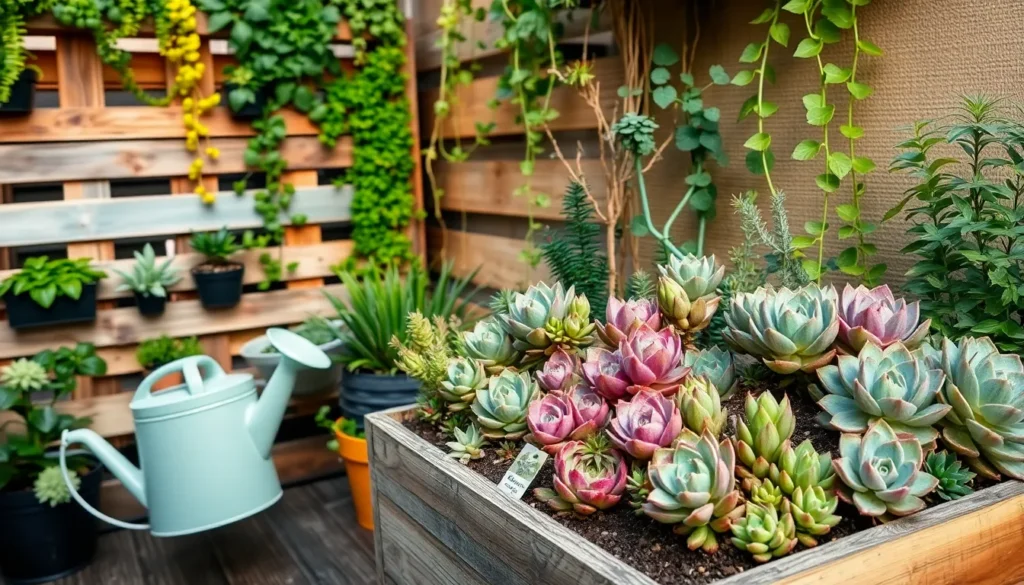In the bustling heart of the city, where concrete and glass often take center stage, lies an oasis waiting to bloom—your urban garden. Whether you’re a newbie planting your first seed or a seasoned green thumb looking to innovate, “7 Quick Urban Gardening Tips” is your gateway to transforming any small space into a thriving sanctuary. Embrace the thrill of nurturing life amidst the urban sprawl, where every leaf and petal becomes a testament to your creativity and care.
This collection of tips is designed to be a beacon of inspiration and practicality, offering you the tools to maximize your space and enhance your gardening prowess. From clever container choices to techniques that optimize sunlight, you’ll find each suggestion brimming with the promise of vibrant growth and bountiful harvests. Dive in with confidence, knowing that these strategies are crafted to help you succeed beautifully, no matter your level of experience. The joy of seeing your efforts come to life will not only enrich your surroundings but also feed your soul with the simple, profound pleasures that only gardening can offer.
Choose Space-Saving Vertical Planters
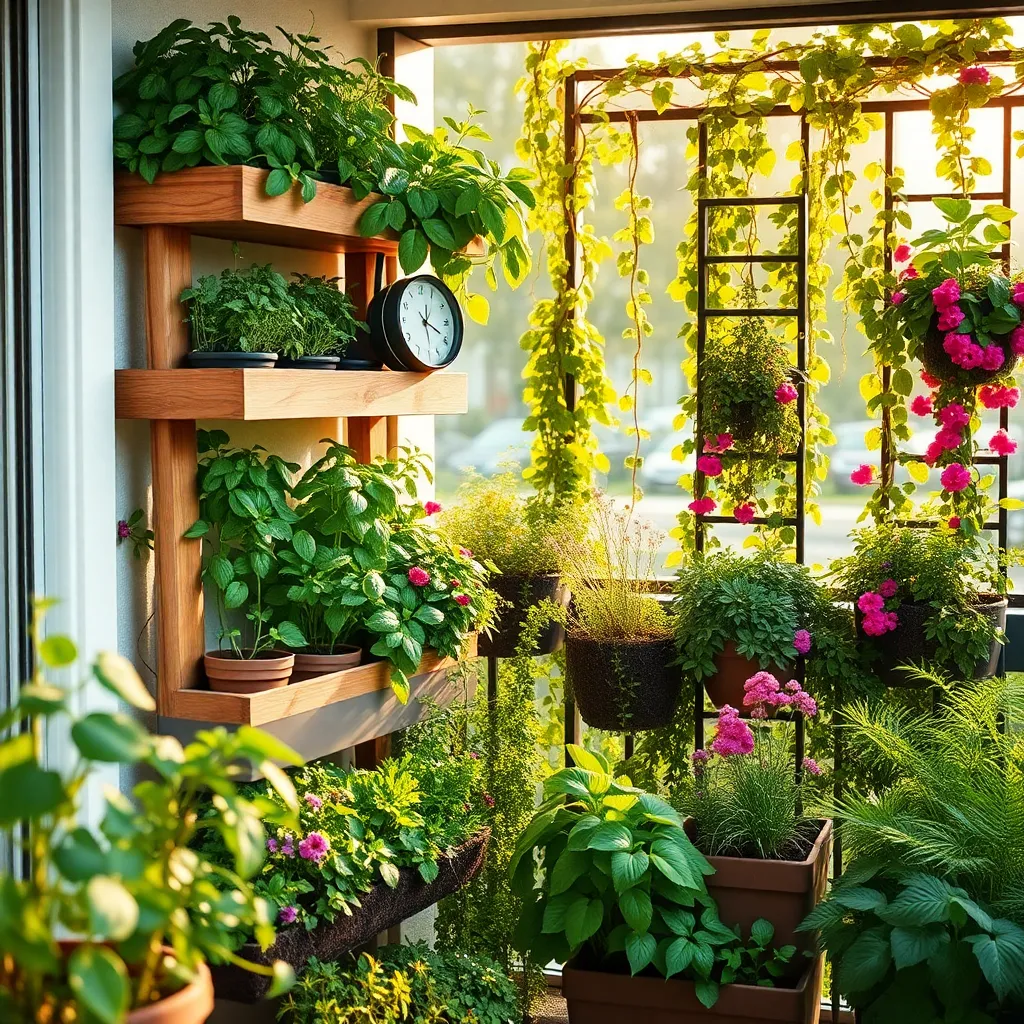
Vertical planters are an excellent choice for maximizing space in urban gardens. By growing vertically, you can cultivate a variety of plants without compromising the limited ground area available.
Begin with choosing the right type of vertical planter for your space, such as wall-mounted or freestanding models. Consider the weight and stability of the planter, ensuring that it is securely fastened or sturdy enough to hold moist soil and growing plants.
When selecting plants for vertical planters, opt for species that thrive in compact spaces, like herbs, strawberries, or trailing flowers. Make sure to provide adequate sunlight and proper drainage, as these are crucial for healthy plant growth in a vertical setup.
For those looking to enhance their skills, try incorporating a drip irrigation system to maintain consistent moisture levels. This advanced tip ensures that your plants are properly hydrated, particularly during hot months or if your schedule prevents regular watering.
Maximize Sunlight with Reflective Surfaces
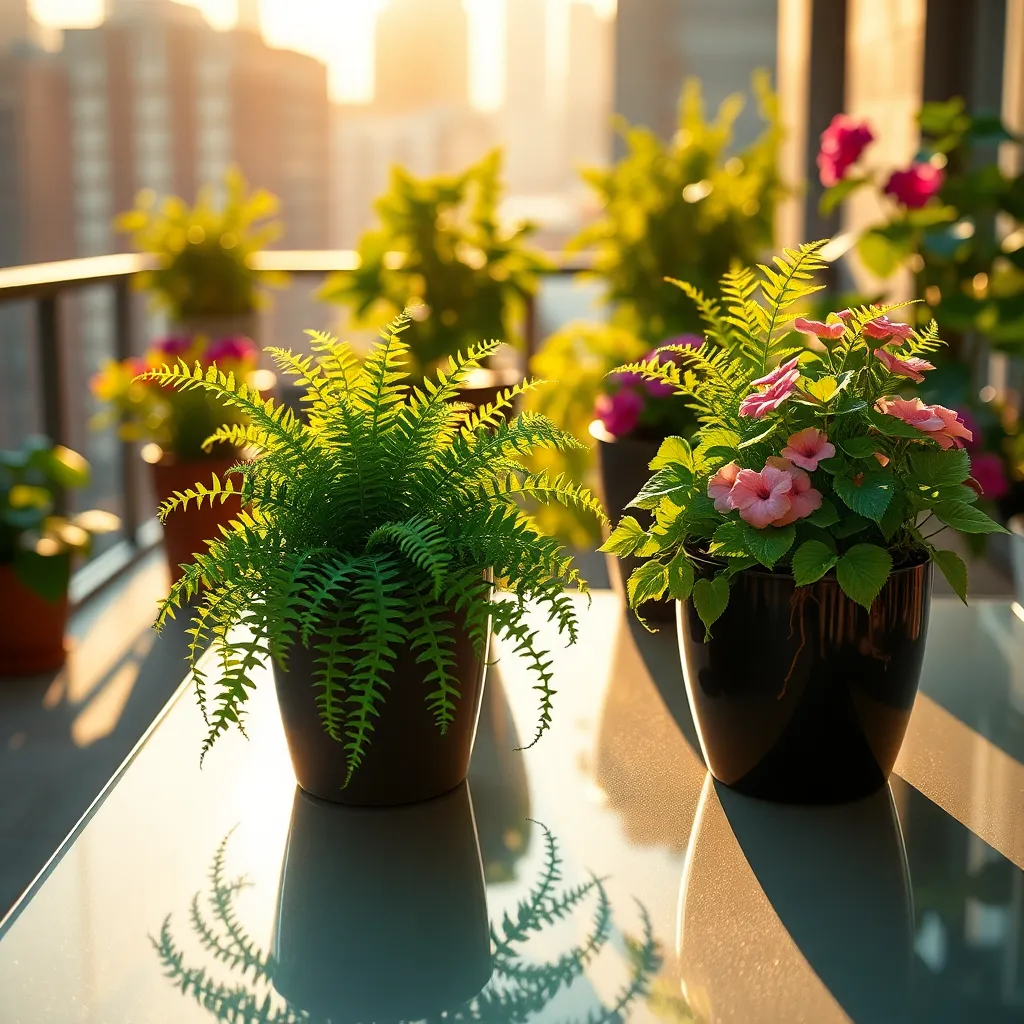
Urban gardens often struggle with limited sunlight, but you can maximize available light by using reflective surfaces. Place mirrors or aluminum foil strategically around your garden to redirect sunlight onto your plants. This simple technique can make a significant difference, especially in shaded areas or where taller buildings block direct light. For those with balconies, try hanging reflective materials behind plants to enhance their exposure to sunlight.
When using reflective surfaces, ensure they are angled correctly to avoid overheating or burning your plants. Reflectors should be positioned to bounce light onto the plants without creating too intense a focus. This method can be particularly beneficial during the shorter days of winter when natural light is scarce. Adjust the position of the reflectors as the sun’s path changes throughout the year for optimal results.
To further enhance light reflection, consider painting nearby walls or fences with light colors. White or light pastel shades can significantly improve the ambient light in your garden space. This approach not only brightens the garden area but also creates a more visually appealing environment. Additionally, reflective mulches, such as silver or white plastic sheeting, can be laid on the soil surface to increase light exposure from below.
Remember, different plants have varying light requirements, so tailor your use of reflective surfaces to the specific needs of your plants. Leafy greens and herbs generally thrive with increased light, while some shade-tolerant plants might need a more subtle approach. Keep an eye on your plants for any signs of stress, such as wilting or leaf burn, and adjust the reflectors accordingly. With these strategies, even the most shaded urban garden can flourish with the right amount of reflected sunlight.
Utilize Containers for Versatile Planting

Container gardening offers a flexible approach to urban gardening, allowing you to grow plants in limited spaces. Consider using containers of various sizes and materials to accommodate different types of plants, from herbs to small fruit trees.
When selecting containers, focus on those with adequate drainage holes to prevent waterlogging, which is crucial for plant health. Use a high-quality potting mix that retains moisture yet drains well, ensuring your plants receive a balanced supply of nutrients and air.
To create a thriving container garden, choose plants suited to your light conditions and climate. Position sun-loving plants, such as tomatoes and peppers, in areas that receive at least six hours of sunlight daily, while shade-tolerant varieties like ferns and hostas do better in less direct light.
Regular maintenance is key to keeping your container plants healthy. Water consistently, checking the soil moisture daily, and fertilize every few weeks with a balanced, water-soluble fertilizer to boost growth and productivity.
Harvest Rainwater for Eco-Friendly Watering

Harvesting rainwater is an eco-friendly way to ensure your urban garden stays hydrated without adding to your water bill. Installing a rain barrel under a downspout is a straightforward method to capture rainwater efficiently.
Choose a rain barrel with a spigot, which makes it easy to attach a hose for watering. Make sure the barrel has a screen to prevent debris and insects from entering, keeping your water clean.
It’s important to position your rain barrel on a sturdy, level surface to avoid tipping when it’s full. For those looking to maximize their setup, consider connecting multiple barrels together to increase your water storage capacity.
Using harvested rainwater is beneficial for your plants because it is naturally soft and free of chemicals often found in tap water. For a more efficient watering routine, water your plants early in the morning or late in the afternoon to minimize evaporation.
Select Compact, High-Yield Varieties
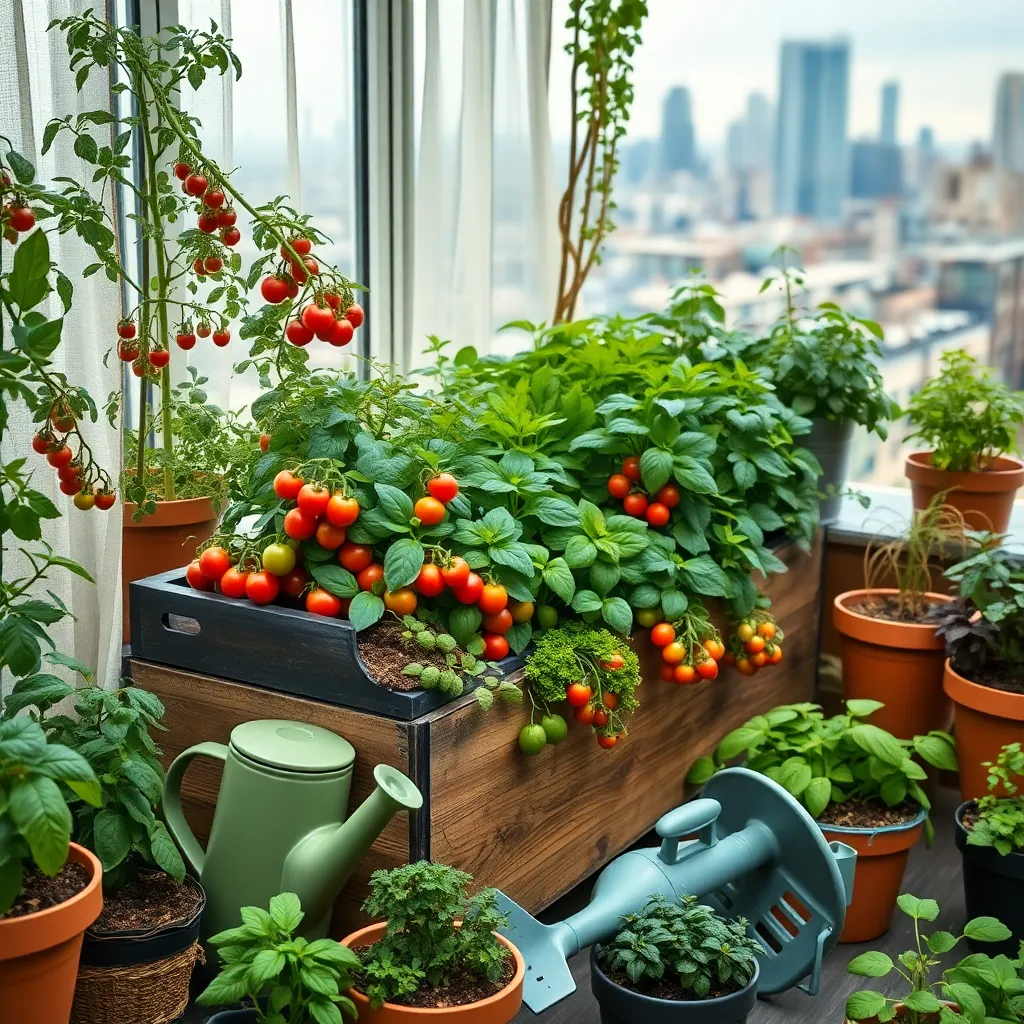
To maximize your space in an urban garden, consider growing compact, high-yield varieties that are designed to flourish in small areas. These plant varieties are bred to produce abundant harvests while taking up minimal space, making them perfect for balconies, patios, or small backyard plots.
Tomatoes, for instance, come in compact varieties such as ‘Tiny Tim’ or ‘Patio Princess’ that thrive in containers. These plants require at least six hours of sunlight daily, and it’s essential to use a potting mix that drains well to prevent root rot.
Herbs like basil, cilantro, and parsley are excellent choices for small spaces, as they can be grown in small pots or even window boxes. For optimal growth, ensure they receive consistent watering, but avoid waterlogging by allowing the topsoil to dry out slightly between waterings.
Advanced gardeners might try their hand at vertical gardening with varieties such as ‘Sugar Snap’ peas or ‘Bush Champion’ cucumbers. Set up a simple trellis or use a vertical planter to support these plants, which will help save space and improve air circulation, reducing the risk of diseases.
Implement Companion Planting for Efficiency
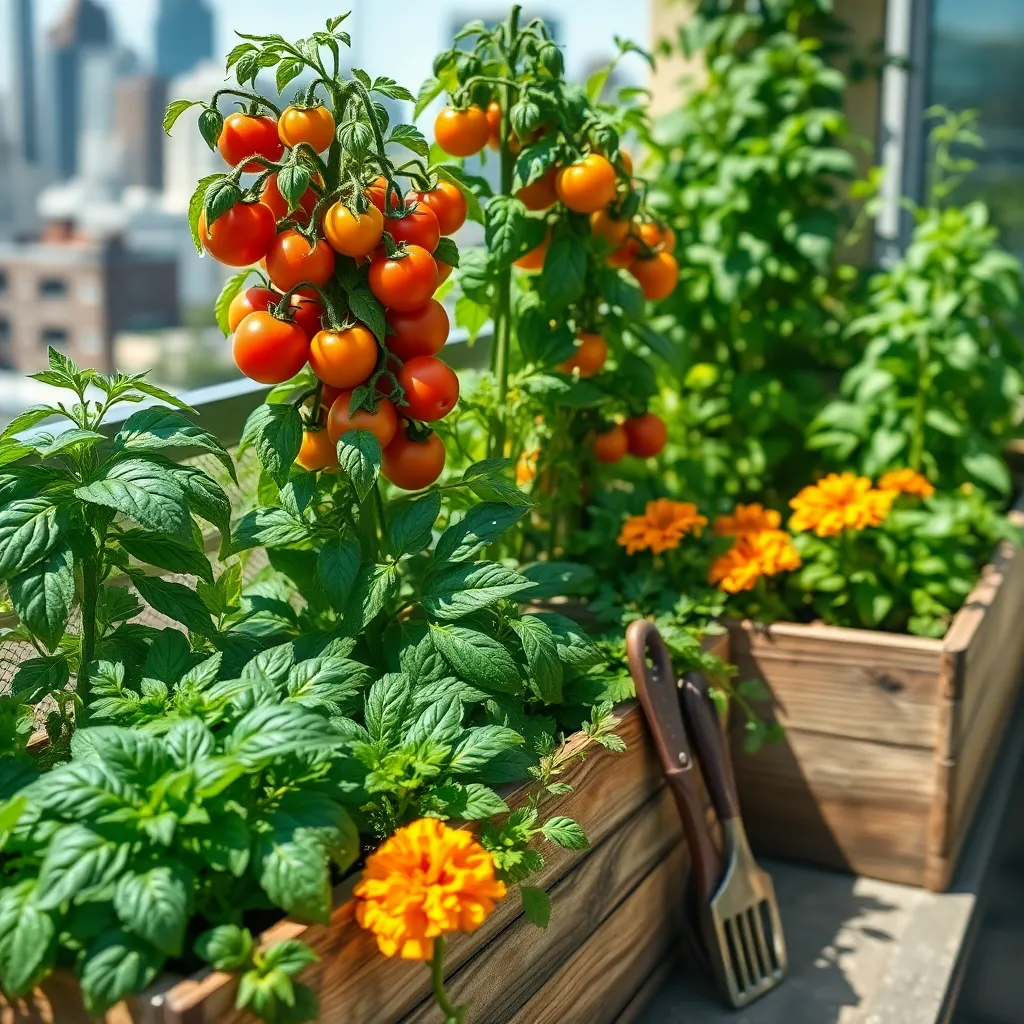
Companion planting is a smart strategy that helps maximize space and efficiency in urban gardens. By choosing the right plant partners, you can improve growth, deter pests, and enhance flavors.
To get started, consider pairing plants that have complementary growth habits. For instance, plant taller crops like tomatoes with shorter ones like basil; the basil can help repel insects while receiving just enough sunlight beneath the tomato’s shade.
Soil health is crucial in companion planting, as different plants have varying nutrient needs. Legumes, such as peas and beans, fix nitrogen in the soil, benefiting heavy feeders like spinach or broccoli planted nearby.
Watering needs can also be balanced by pairing plants with similar moisture requirements. For example, rosemary and thyme thrive in dry conditions, making them perfect partners in a well-draining soil mix.
Advanced gardeners may experiment with “trap crops” that attract pests away from main crops. Planting nasturtiums near brassicas can draw aphids away, reducing damage to your cabbage or kale.
Create a Compost Bin for Rich Soil

Creating a compost bin is an excellent way to enrich your soil with homemade fertilizer. Start by selecting a suitable location in your garden that is easily accessible but not in direct sunlight all day.
Choose a bin that suits your space, whether it’s a simple DIY wooden structure or a store-bought tumbler. Ensure it has adequate aeration to facilitate the decomposition process, which is crucial for breaking down organic material efficiently.
Layer your compost materials, alternating between brown and green waste. Browns like dried leaves and twigs provide carbon, while greens such as vegetable scraps and coffee grounds add nitrogen, which are both essential for balanced composting.
Turn your compost pile once a week to keep it aerated and to speed up decomposition. Regularly check the moisture level; it should be as damp as a wrung-out sponge, ensuring microorganisms can thrive and break down materials efficiently.
Conclusion: Growing Success with These Plants
In the hustle and bustle of urban life, nurturing your relationship can be akin to cultivating a thriving garden amidst concrete. Our 7 Quick Urban Gardening Tips offer a fresh perspective on tending to your emotional landscape. First, we explored the importance of creating a strong foundation, akin to healthy soil, in which trust and communication flourish. Then, we delved into the significance of regular nurturing through quality time and shared experiences, much like watering your plants. We highlighted the need for adaptability, as relationships, like gardens, require flexibility and resilience. Cultivating patience and understanding was likened to giving your garden time to grow. Just as you remove weeds, we emphasized the importance of addressing small issues before they escalate. We also discussed the power of diversity, encouraging varied experiences to enrich your relationship. Lastly, we talked about celebrating growth and milestones, akin to enjoying the fruits of your labor.
Now, take a moment to assess your relationship garden. Choose one tip to implement today and watch as your bond strengthens. Remember to save or bookmark this article for future reference, as these insights can guide you through every season of your relationship. By sowing these seeds of wisdom, you’re paving the way for a flourishing, enduring connection. Your relationship success is just around the corner!

